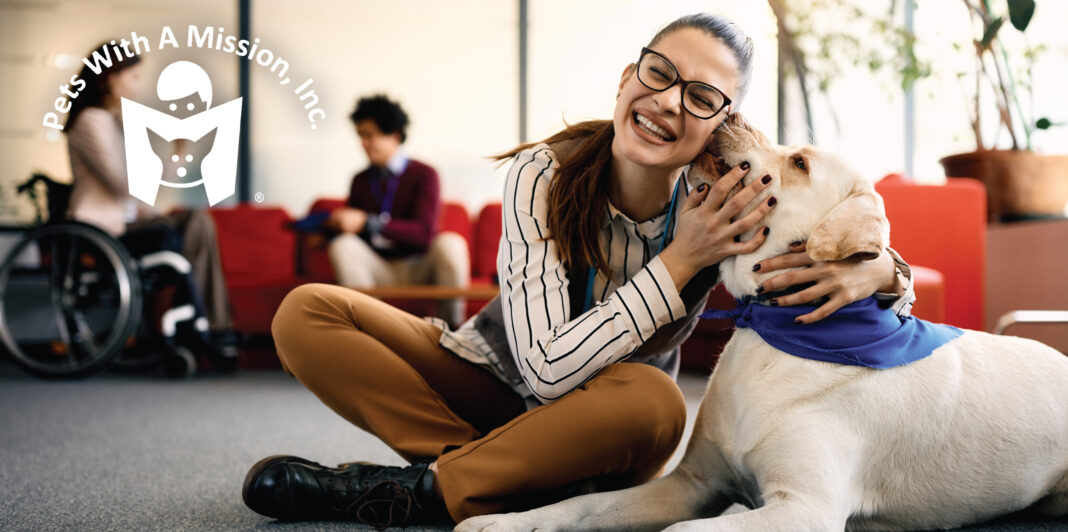Tales Of Therapy Dogs
If therapy dogs could talk, the stories they would tell. They live very interesting lives. The majority of time they are much loved family pets. But an hour or two a week, they work a volunteer job that serves the community. They put on their working collars and become therapy dogs. They may not be able to dictate their own stories but some of their true stories are given below. Enjoy.
Sasha was an 85-pound black and tan Rottweiler and a therapy dog. She loved children so her favorite place to go for visits was to an elementary school. For a couple of years, she worked with her buddy and fellow therapy dog, Roxie. Roxie is a predominately white, 13-pound Chihuahua-Corgi mix. They looked so cute walking down the school hallway – the big black dog next to the small white dog. Once in the classroom, blankets were put on the floor as the dog’s places and they were ready to have stories read to them. Teachers would select the children to do the reading. In most cases, the children needed extra help because they were reading below grade level, they were timid readers, or they had difficult home situations. For twenty minutes once a week for six weeks they read stories to the dogs. Sasha was large enough that many children liked to lean against her while they read out loud. She loved it. If the child did not know a word, they would ask Sasha. Then, the handler would explain it to the child and Sasha. Children enjoyed reading to the dogs because the dogs did not complain if they read slowly or mispronounced words. Dogs are nonjudgmental. Teachers told the handlers that children who read to the dogs became more fluent readers and usually improved by one or two grade levels after six weeks with the dogs.
Peanut is a tri-color Pembroke Welsh Corgi who went to schools. She and her handler worked with special education students. Some students had mobility issues so during their therapy time with Peanut, they got to walk her down the hall. The handler attached a second leash to Peanut’s collar and handed it to the child. The child walked Peanut with the handler maintaining control with the first leash. A similar double leash process was used if the child used a wheelchair or walker. Walking Peanut at school gave the child bragging rights when they were with other students because they got to walk “their” dog at school.
Nursing Homes are visited by therapy dogs, too. Marko, a short-coated Collie, and his handler visited the same nursing home for many years. Over time, they developed relationships with many of the residents. One man especially enjoyed seeing Marko. On one visit, Marko and his handler entered the facility and the man was near the entrance door. The man saw Marko and immediately shoved him hard against the wall. That was a total surprise to Marko, his handler, and nearby staff. Marko was unhurt. Later, the handler was told that the man had a fever and an infection that probably caused his unusual behavior. Still, it is a cautionary tale to remind handlers that they always have to be on guard to protect their animal partner anytime they are on a visit.
At a different nursing home, Willow, a fifteen-pound Border Terrier, and her handler were visiting people that they saw weekly. The team regularly visited an elderly couple in the man’s room. On that day, the man was not in his room. Willow alerted and went looking for him. The handler followed a determined Willow down the hall and around a couple of corners to a room that they had never been to before that day. The handler knocked on the door. It was the wife’s room. They learned that the man died a few days earlier. The handler cannot explain how Willow found her way to that room. Somehow, Willow instinctively knew that the woman very much needed a therapy dog visit that day.
Hospitals are a popular place for therapy dog teams to work. The dogs provide comfort to patients and their families. But sometimes the ones who benefit most from a therapy dog visit are the hospital staff. The doctors, nurses, and technicians have very stressful jobs. Teams frequently hear hospital personnel say “I really needed a visit with a dog today.” For the patients, a visit with a dog can at least momentarily take their minds off their discomfort or stress. Dixie, an Australian Cattle Dog, and her handler got off the elevator on the third floor of the hospital and immediately heard moaning coming from a nearby room. The handler was not sure if they should visit that room but she knocked on the door and asked if the woman wanted a visit with a dog. The woman did so the handler introduced Dixie and let her slowly approach the bed. The woman petted Dixie and talked to her. A few minutes later, the woman greeted the handler and thanked them for the visit. As the team walked down the hall to visit other people, the handler noticed that things were quieter. The moaning heard earlier had stopped and it did not resume while the team was on that floor. At least for a while, their visit comforted a stressed person. It was a good day.
Therapy dogs love to interact with people whether with their family members or with strangers. They seek attention. At the same time, dogs are tuned in to people’s emotions and they have the unique ability to comfort them. They know when it is time to quietly sit and receive a stranger’s hug. Just walking into a room may cause a person to smile and forget their stress or discomfort for a little while. Therapy dogs are the best inexpensive medicine in existence.















